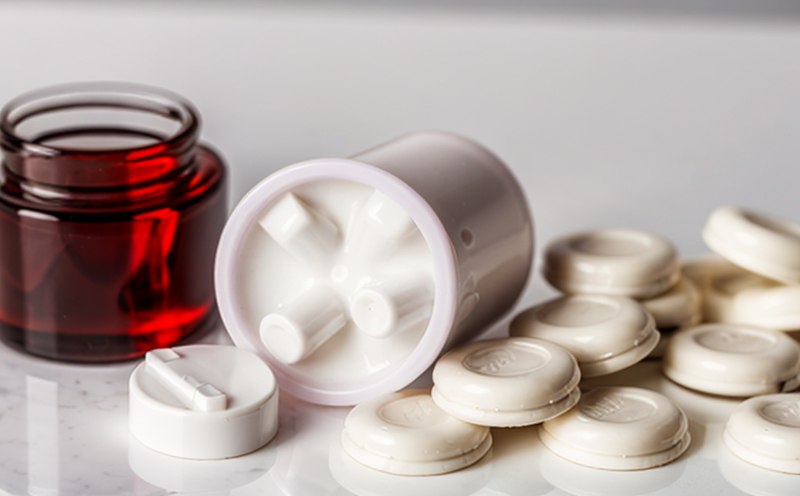USP Capsule Disintegration in Simulated Gastric Fluid Testing
The United States Pharmacopeia (USP) capsule disintegration test is a critical procedure that ensures the quality, safety, and efficacy of oral solid dosage forms. This method evaluates how quickly gelatin capsules can break down under conditions simulating those found in the human stomach. The USP provides specific guidelines for this test to ensure uniformity across pharmaceutical manufacturing processes.
The primary objective is to determine whether the capsule shell has disintegrated into small enough particles within a specified time frame, allowing active ingredients to be released effectively and safely. This process helps prevent potential issues such as incomplete drug release or excessive particle size which could pose risks during digestion.
For this test, the sample is placed in an apparatus containing simulated gastric fluid (SGF) at 37°C with continuous stirring. The temperature closely mimics body temperature, while the SGF simulates acidic conditions found naturally within the stomach. After a certain period—typically one hour—the container is inspected for signs of disintegration.
Understanding the importance of this test requires insight into its role in ensuring product consistency and regulatory compliance. Regulatory bodies like FDA rely heavily on such tests to maintain high standards across various industries. By adhering to these protocols, manufacturers can ensure their products meet strict quality benchmarks set forth by international standards including ISO 17892-3:2015.
The procedure itself involves several key steps:
- Preparation of the sample according to USP specifications
- Loading the prepared capsules into a specially designed apparatus filled with SGF
- Stirring and monitoring for disintegration over one hour
This testing method is essential because it directly impacts patient safety by guaranteeing that medications are released at appropriate rates. Ineffective capsule dissolution can lead to delayed or prolonged absorption, potentially causing adverse effects on health.
Furthermore, understanding the role of this test within broader pharmaceutical quality control measures enhances appreciation for its significance. Quality assurance teams often incorporate multiple checks during development stages to ensure products comply with established standards before reaching market approval levels.
Industry Applications
- Ensuring compliance with USP monographs on capsule disintegration time limits
- Verifying the performance of new formulations against existing reference products
- Determining optimal processing conditions for enhancing dissolution rates without compromising stability
- Maintaining consistency across batch production runs through standardized testing procedures
Why Choose This Test
The USP capsule disintegration test is chosen for its reliability and precision in assessing the integrity of gelatin-based capsules. It allows manufacturers to pinpoint potential weaknesses early in development, thereby minimizing costly recalls down the line. Additionally, this method provides clear evidence supporting claims about drug release characteristics made on product labels.
By incorporating this testing into their quality assurance processes, companies demonstrate commitment to maintaining top-notch standards of pharmaceutical excellence. This not only builds trust among consumers but also supports long-term business success by fostering customer loyalty and satisfaction.
International Acceptance and Recognition
The USP capsule disintegration test enjoys widespread acceptance globally due to its rigorous methodology and consistent results. Regulatory agencies worldwide recognize the importance of this test in ensuring product quality, making it a cornerstone of compliance efforts.
For instance, European Pharmacopoeia (Ph.Eur.) has adopted similar procedures for evaluating drug release properties, reflecting the international consensus around standardized testing methods. Similarly, Japanese Pharmacopoeia and British Pharmacopoeia follow comparable approaches to ensure harmonization across different markets.
The use of internationally recognized standards like ISO 17892-3:2015 further reinforces confidence in these tests' validity and applicability. These global standards provide a common language for discussing pharmaceutical quality, facilitating smoother interactions between manufacturers and regulatory bodies regardless of location.





